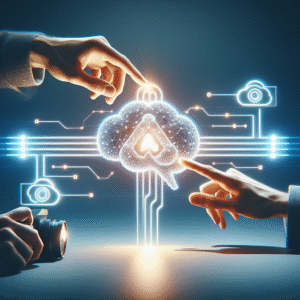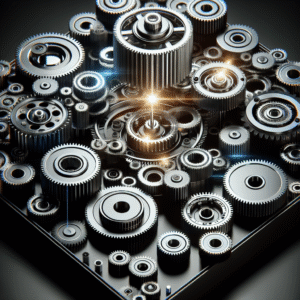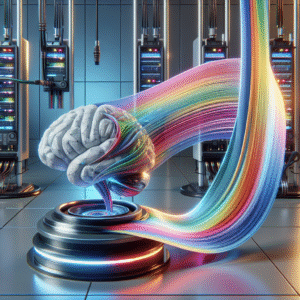Have you ever wondered how the Internet of Things (IoT) is changing the way we live, work, and interact with the world around us? The concept of IoT has been around for a while now, and its influence stretches across various sectors, impacting our daily lives in ways we may not even realize. I find it fascinating how something as simple as a thermometer or a light bulb can transform into a smart device that interacts with us and other devices.
What is the Internet of Things (IoT)?
At its core, the Internet of Things (IoT) represents a network of interconnected devices that communicate with each other over the internet. These devices range from everyday household items like refrigerators and thermostats to sophisticated machinery used in industries. The beauty of IoT is that these devices can gather, analyze, and exchange data, enabling us to make smarter decisions based on real-time information.
How Does IoT Work?
When I think about IoT, I imagine a web of devices working collaboratively. Each device is equipped with sensors, software, and other technologies that allow it to collect and transmit data. This data flows through the internet to cloud services, where it’s processed and analyzed. The insights derived from this data can then be sent back to the device or to users, enhancing functionality and user experience.
Devices and Sensors
The backbone of IoT consists of various devices equipped with sensors. For instance, my smart thermostat measures room temperature to optimize heating and cooling. Similarly, fitness trackers monitor my physical activity and provide data that can help improve my health.
Connectivity
Part of what makes IoT so powerful is its connectivity. Most IoT devices use Wi-Fi, cellular networks, or other communication protocols to transmit data. This connectivity ensures that devices can interact with each other and send relevant information to centralized platforms for further analysis.
The Evolution of IoT
Understanding the evolution of IoT is essential for appreciating its current impact. It all started with basic machines communicating over the internet, but it’s now reached a point where entire ecosystems of devices can work together.
Early Beginnings
The journey began in the late 1960s with the ARPANET, the precursor to the modern internet. However, it wasn’t until the early 1990s that the term “Internet of Things” was officially coined by Kevin Ashton. The introduction of RFID (Radio-Frequency Identification) technology significantly advanced the possibilities of connectivity between machines.
Growth of Smart Devices
Over the past couple of decades, technology has rapidly advanced, leading to the proliferation of smart devices. I still remember when smartphones first emerged, fundamentally changing how I communicate and access information. The rise of smartphones paved the way for countless other devices, extending the concept of IoT into our homes and workplaces.
The Positive Impact of IoT
The implications of IoT extend far beyond mere convenience. From increasing efficiency to enhancing safety, IoT has considerably improved various aspects of our lives.
Enhancing Efficiency
One of the areas where IoT shines is efficiency. When I reflect upon my own life, I can see how IoT devices help me save time and energy.
Smart Homes
In my smart home, devices like smart lights and thermostats work together. For example, my smart thermostat learns my habits and adjusts the temperature accordingly, saving energy when I’m not at home. By automating mundane tasks, I can focus on more important things without constantly managing every element of my home.
Industrial IoT
On a larger scale, industries are leveraging IoT to optimize operations. By using predictive maintenance on machinery, companies can reduce downtime and increase productivity. The ability to monitor performance metrics in real time allows managers to make informed decisions, which can lead to significant cost savings.
Improving Safety
Another significant benefit of IoT lies in safety. Whether in homes, workplaces, or public spaces, IoT devices can contribute toward safer environments.
Home Security Systems
I invested in a smart security system equipped with cameras, motion sensors, and smart locks. Now, I can monitor my home remotely and receive alerts if something seems amiss. This peace of mind allows me to enjoy my time away, knowing that my home is being protected.
Workplace Safety
In industrial settings, IoT devices can monitor dangerous conditions and send alerts to workers and supervisors. For instance, wearable devices can detect environmental hazards, ensuring that employees are aware and safe. This proactive approach significantly reduces workplace incidents.
Real-World Applications of IoT
The applications of IoT span various sectors, each offering unique benefits. It’s enlightening to consider how its use is tailored to specific needs.
Smart Cities
Imagine living in a city that uses IoT to manage resources effectively. Smart cities incorporate IoT technology for traffic management, waste management, and energy efficiency.
Traffic Management
Cities can use IoT sensors to monitor traffic patterns and adjust signal timings, helping to reduce congestion. With real-time data available, I can receive updates on traffic conditions, allowing me to choose the fastest routes and save time.
Waste Management
Some cities are now using smart bins that notify waste management teams when they’re full, optimizing collection routes. I find it impressive that such simple solutions can enhance operational efficiency while also making cities cleaner.
Healthcare
The healthcare sector benefits immensely from IoT, which has led to innovative solutions in patient care.
Remote Monitoring
Having IoT devices monitor patients’ health metrics remotely has transformed how healthcare can be delivered. For example, I read about smart wearable devices that track vital signs and send real-time updates to healthcare providers. This enables proactive care and timely interventions.
Drug Management
IoT technology can also facilitate drug management with smart pill bottles that remind patients when to take their medication. I think this could be a game-changer for promoting adherence to prescribed treatments.
Agriculture
IoT is also making waves in agriculture by revolutionizing farming practices.
Precision Farming
IoT solutions like soil sensors and weather monitoring systems allow farmers to collect data and make better farming decisions. For instance, I learned that some farmers use smart irrigation systems that adjust water usage based on real-time moisture levels in the soil, maximizing yields while conserving water.
Livestock Monitoring
Smart collars for livestock can track health and location data, helping farmers manage their herds efficiently. Having access to this data allows farmers to act quickly on potential health issues.
Challenges Facing IoT
While the benefits of IoT are impressive, it’s essential to consider the challenges that come along with its rapid growth.
Security Concerns
As a user of smart devices, I often think about security. The myriad of devices connecting to the internet raises concerns about potential vulnerabilities.
Data Privacy
IoT devices collect vast amounts of data, which can be sensitive. There is a growing need for robust data protection protocols. I believe it’s crucial to understand where my data is being stored and how it’s being used.
Hacking Risks
The interconnectedness of devices can present opportunities for cybercriminals. If one device is compromised, it could potentially lead to a larger breach involving multiple systems. That’s why it’s vital for manufacturers to prioritize security in their product designs.
Interoperability Issues
Another challenge lies in the lack of standardization among IoT devices. As someone who enjoys using a variety of smart devices, I find it frustrating when devices from different manufacturers can’t communicate effectively with each other.
Compatibility
Imagine trying to connect a smart light bulb to a different brand’s hub and finding that they don’t work together. Achieving compatibility between devices requires standard protocols that all manufacturers agree upon. The industry continues to make strides toward greater compatibility, but obstacles remain.
The Future of IoT
As I look toward the future, I’m excited about the possibilities that IoT presents. The technology is evolving rapidly, and new applications continue to emerge.
Artificial Intelligence Integration
Integrating IoT with artificial intelligence (AI) poses fantastic opportunities for growth. Imagine devices learning from the data they collect and improving their functionality over time. I find it exhilarating to think about AI making my home even smarter, enhancing my daily life in more ways than I can anticipate.
Greater Connectivity
With the rollout of 5G technology, the IoT landscape will change dramatically. The increased speed and lower latency of 5G networks will support a more extensive range of connected devices. I look forward to the day when all the devices in my life can seamlessly communicate with one another without hiccups.
Sustainability Initiatives
Lastly, IoT’s role in promoting sustainability will continue to grow. I believe that smart technologies can offer innovative solutions for energy management, water conservation, and waste reduction. By connecting devices and optimizing their usage, IoT can enable a more sustainable future.
Conclusion
Reflecting on the points above, it’s clear that the Internet of Things has a profound impact on our lives. From improving efficiency and safety to paving the way for creativity and innovation, IoT is revolutionizing the world around us. As I embrace these technologies, I recognize that we must navigate challenges like security and interoperability to harness their full potential.
I look forward to a world where IoT continues to enhance my daily life while promoting sustainability and connectivity. Whatever the future holds, I know that IoT will be a key player in shaping it.






